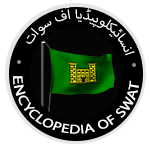
Major Henry George Raverty’s brief work with the title, ‘An account of Upper and Lower Suwat, and the Kohistan, to the source of the Suwat River; with an account of the tribes inhabiting those valleys’ was published in the Journal of the Asiatic Society of Bengal (Volume XXXI, No.I. To V. 1862) Calcutta in the year 1862. That work of Major Raverty is produced here on this website for the interest of the readers and research scholars. Raverty wrote: (PART 31)
The people of the more open parts of the valley are not well off for fuel, hence the dry dung of cows is used instead; but where the hills are near, and in their small lateral valleys, fuel is plentiful enough. The pine is chiefly used for this purpose; and pine-slip torches are generally used in place of lamps or candles; but shop-keepers, and students, who have to read at night, burn oil. I was rather surprised to see a primitive description of lantern in Suwat, something on the plan of English ones, although, of course, not copied from them. It consists of a wooden frame covered with buffalo bladder, or the skin of the pardah or membraneous covering of the stomach of animals, stretched over it whilst damp, with a place for oil in the centre. By the light of these one can see to read very well; and during my journey in Suwat I had often to read books by their light.
There are no camels to be found in Suwat; but there are horses, mules, asses, bullocks, oxen, cows, and buffaloes. Oxen, mules, and asses are the beasts of burden. There are also dogs, cats, rats, and mice, as in most countries, pigeons, and fowls, which latter are bred in great numbers. There are no sheep of the dumbah or fat-tail species, only the common description of that animal; but there are goats of superior kind. The rivers also contain fish, which, however, do not appear to be used for food. The feathered game consists of water-fowl in great numbers, partridges, both grey and black, and quail. There is no waste land to shelter game in Lower Suwat, except in the hills on either side, where animals of the chase abound; but in Upper Suwat, and in the Kohistan further north, the case is different. The only wild animals, in Lower Suwat, are jackals and foxes, which are not numerous. The chief reptiles and insects are snakes, scorpions, sand-flies, brorrahs, mangurrus, or bugs, musquitos, and fleas, from which Heaven defend us! they are more numerous than the flies of Peshawar. The brorrah is a species of worm or insect,—a sort of wood-louse—something in the shape of a bug but larger, generally infesting mosques and houses where there are old mats lying about. After biting a person, the bitten place becomes red and inflamed. The khamanduk of Kabul and Kalat-i-Baluch is a different insect. I slept outside a village, in the plain, on one occasion; but it was all the same: the ground was grassy, and I could not sleep for the fleas.
The principal articles imported into Suwat are, salt, which the Khattaks bring there, from the Salt Range, for sale; and a few articles of British manufacture, consisting of cotton goods generally, such as calicos, twills, and muslins; together with little coarse blue cotton cloth, the manufacture of Peshawar; and copper and brass cooking utensils, but only in very small quantities ; for the people are so constantly at feud with each other, that they have often to abandon house and property at a moment’s warning, and therefore, to prevent the loss of such expensivs articles, they generally content themselves with earthen vessels.
The exports are more considerable; and consist of rice; roghan or clarified butter; urrd (phaseolos mungo) ; wheat; barley, in great quantities to all the districts round about ; honey, and wax ; scarfs woven from the wool or fur called pashm, varying in price from one to six rupees each, the manufacture of Upper Suwat, often the work of Kashmiris who have settled permanently in the country; but these articles are not to be compared with those brought from Kashkar. The shalaka’i of Kashkar is that worn by the Hindus of Kandahar as their peculiar distinguishing mark; but at Peshawar, Musalmans and Hindus wear them, without distinction. Bullock and buffalo hides are also exported, but chiefly to Bajawrr. Buffaloes are few in the latter district; and although numerous in Suwat, they are not so much so as to enable the Suwatis to send them for sale to Peshawar. There is no trade in wool, as sheep are few, as well as goats; and the pashm or wool, such as they have, is required for home consumption.
Reference (Source Details):
‘An account of Upper and Lower Suwat, and the Kohistan, to the source of the Suwat River; with an account of the tribes inhabiting those valleys’ was published in the Journal of the Asiatic Society of Bengal (Volume XXXI, No.I. To V. 1862) Calcutta, pages 276-277.
TO BE CONTINUED..









Comment here